
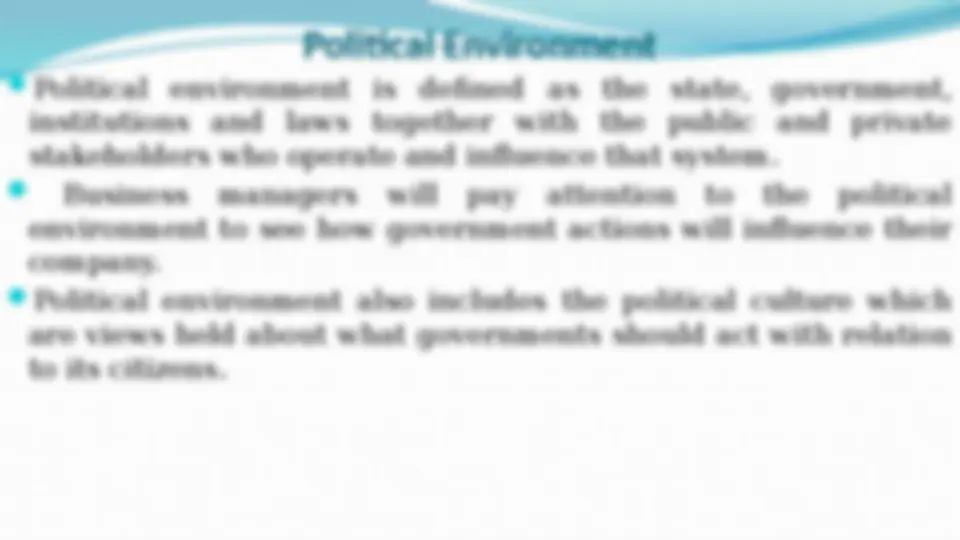
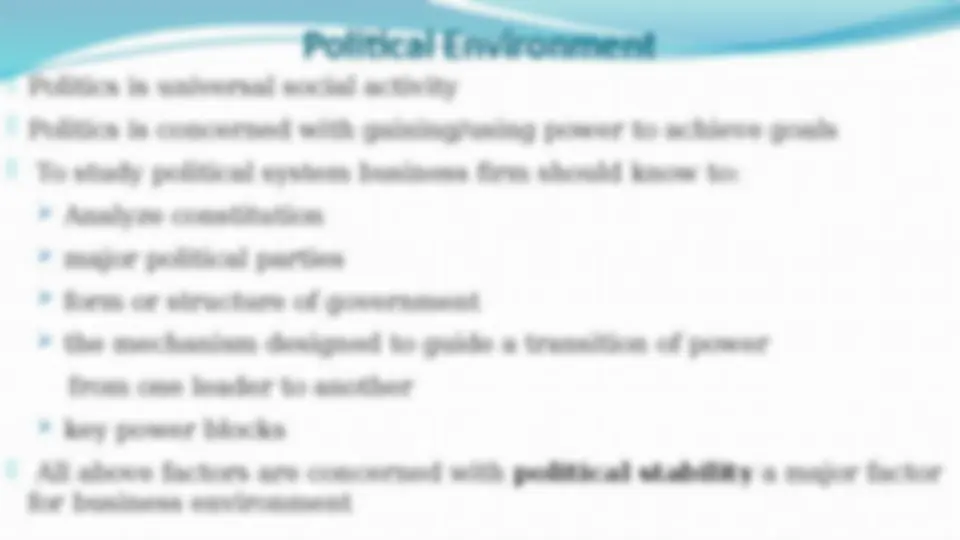
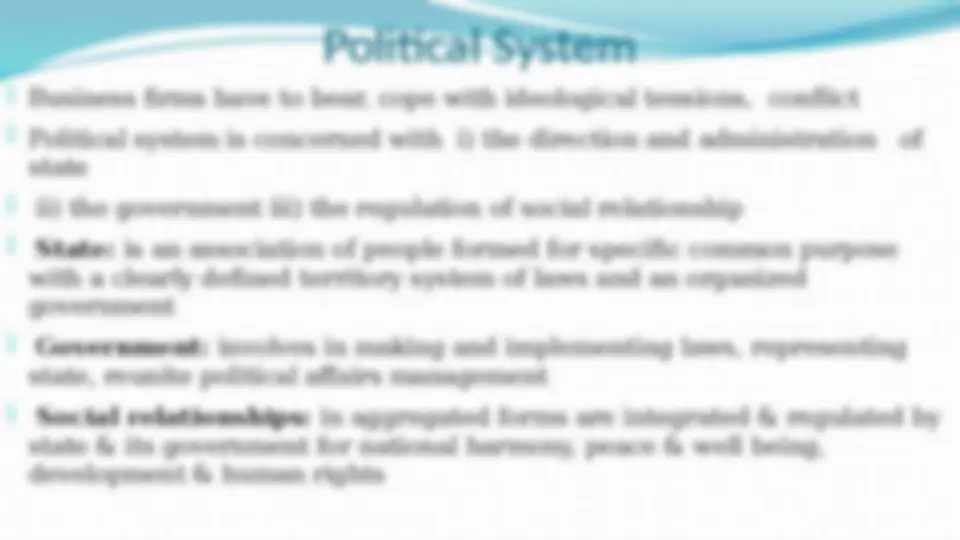
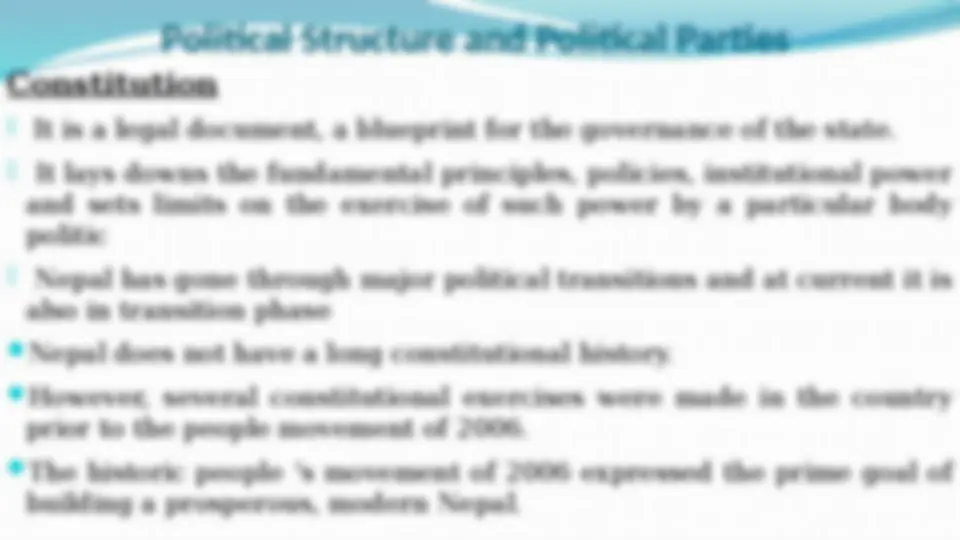
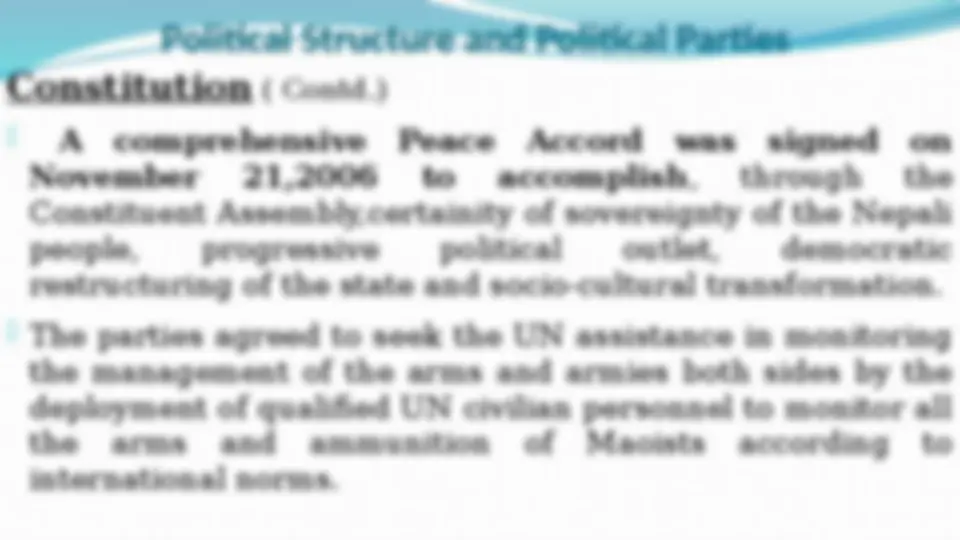
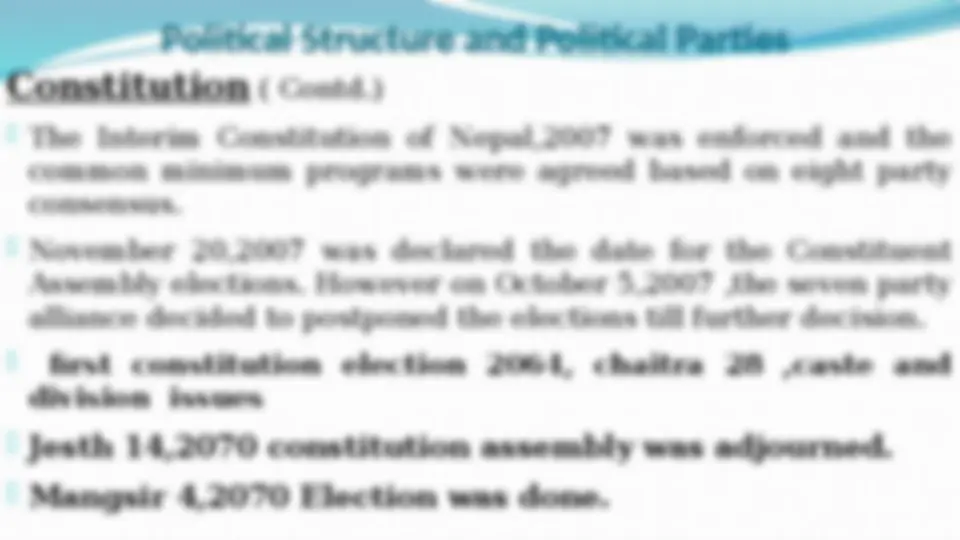
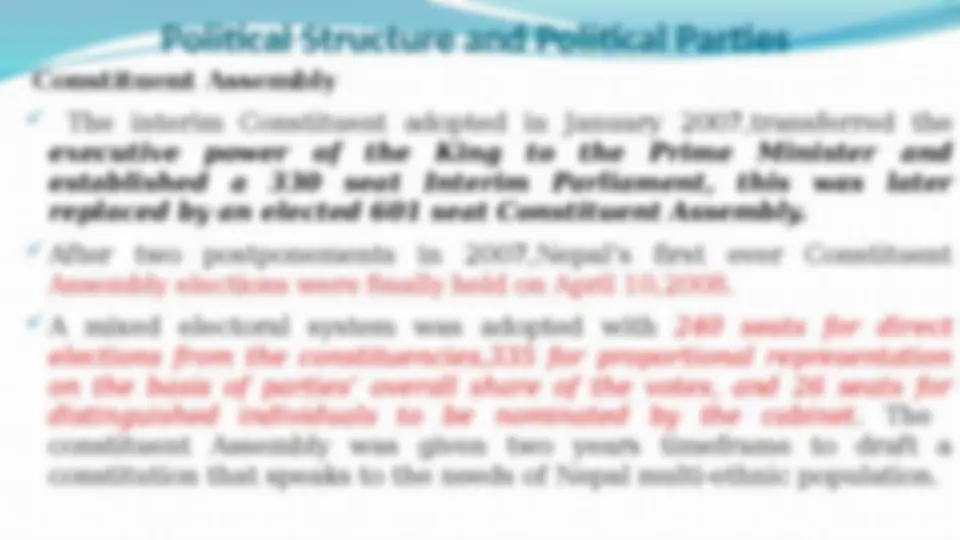
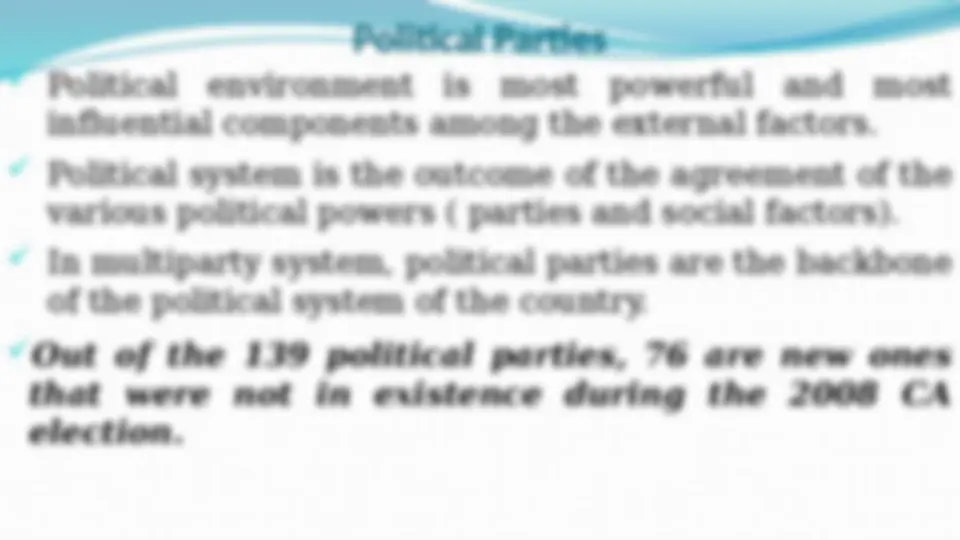
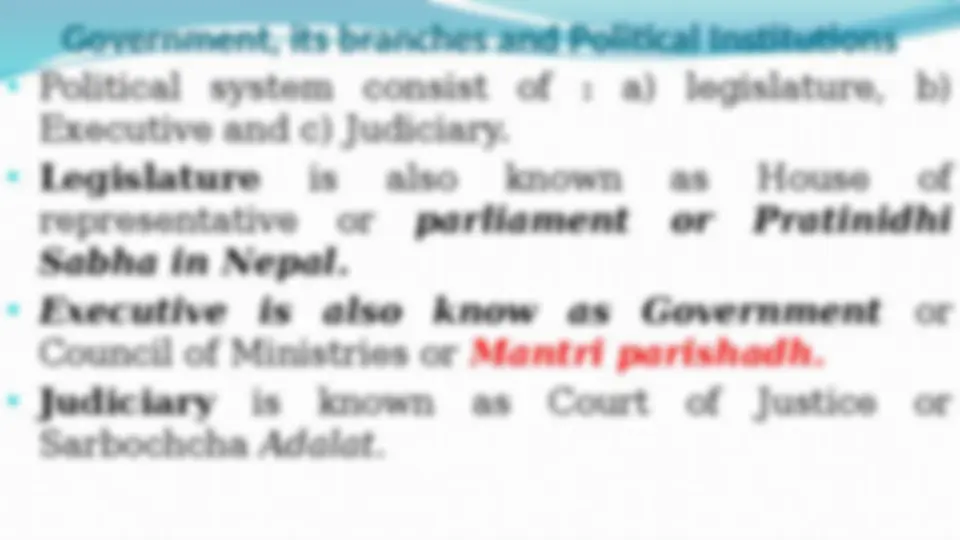
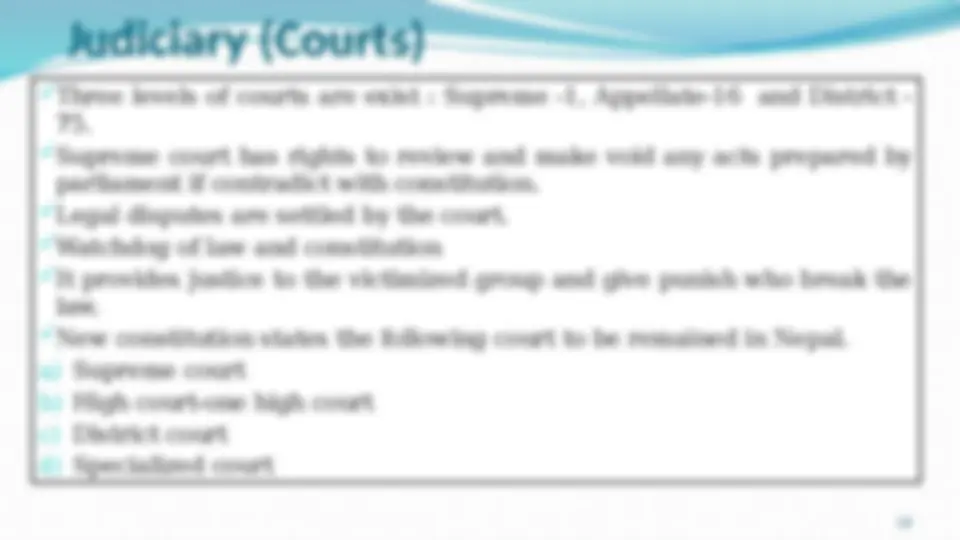
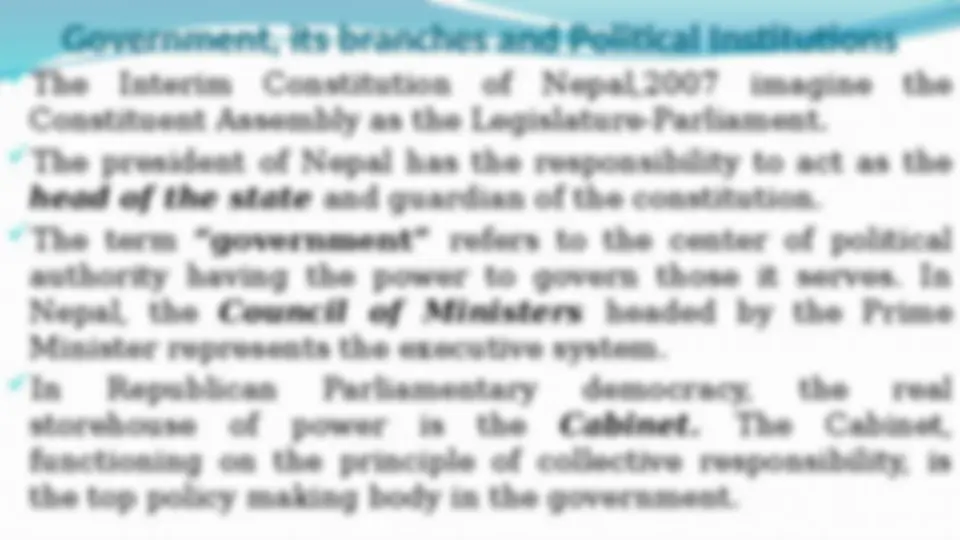
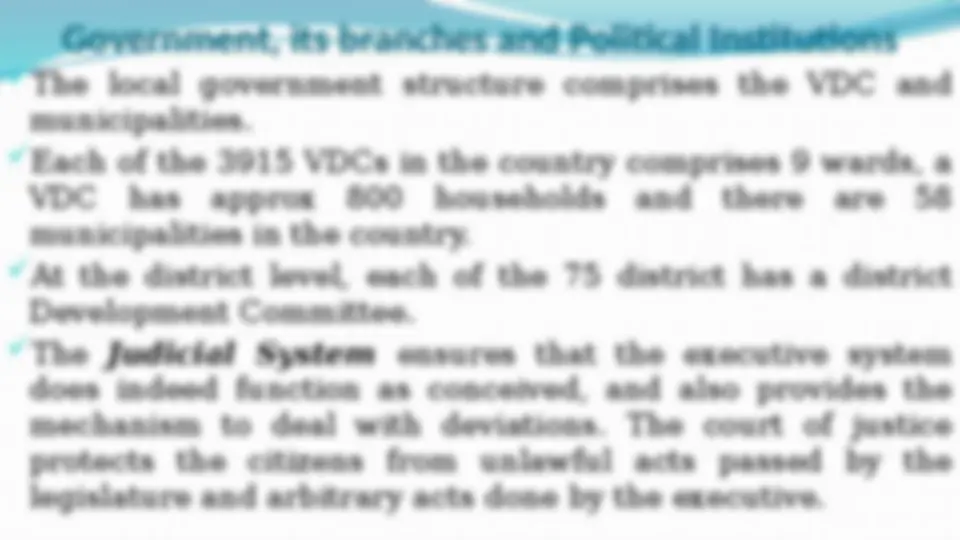
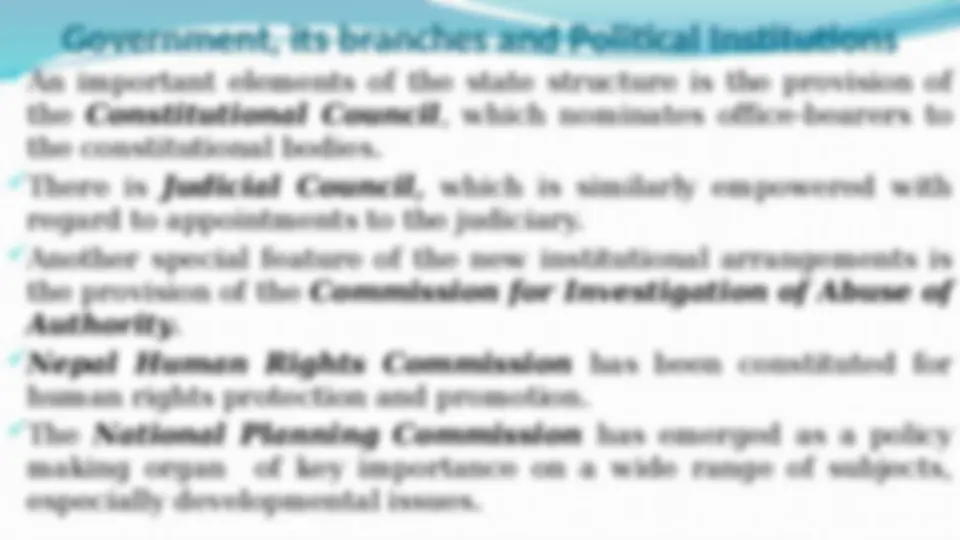
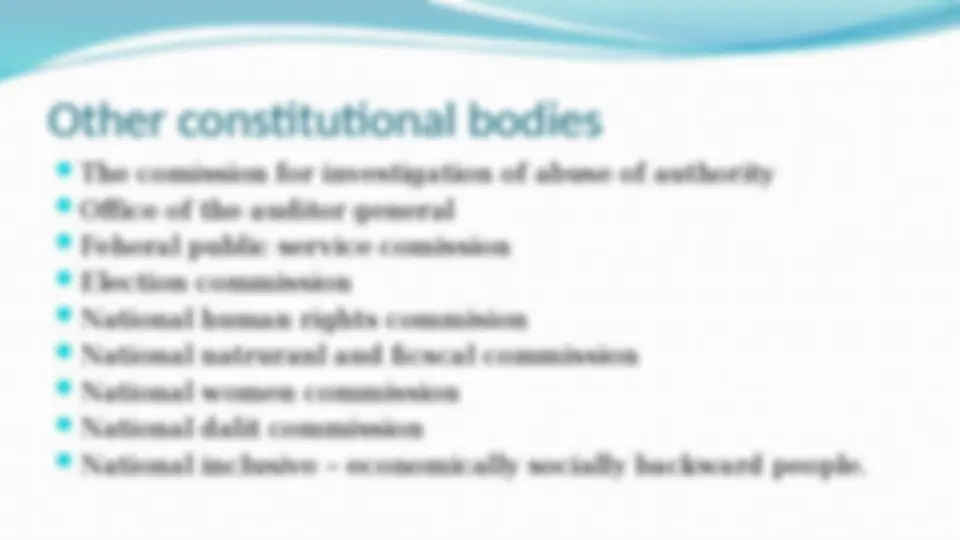
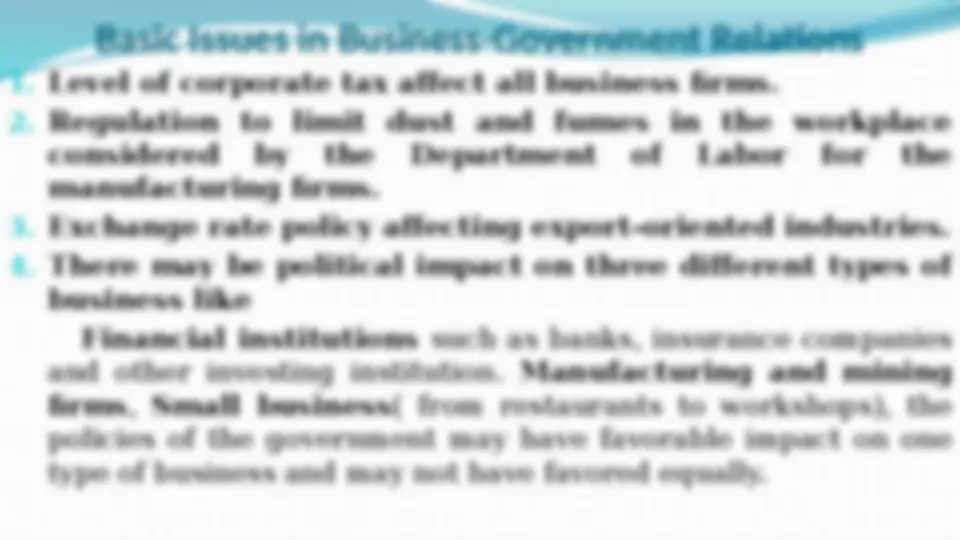
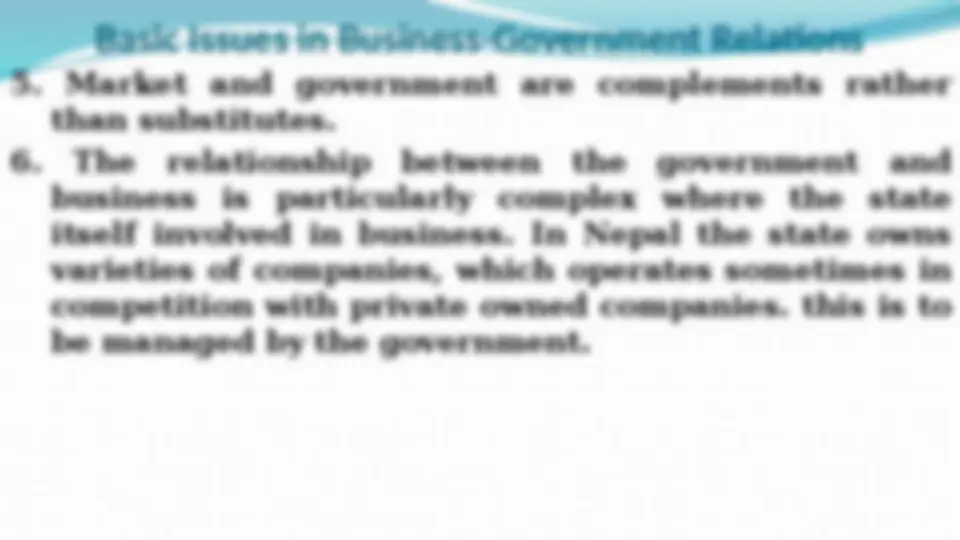
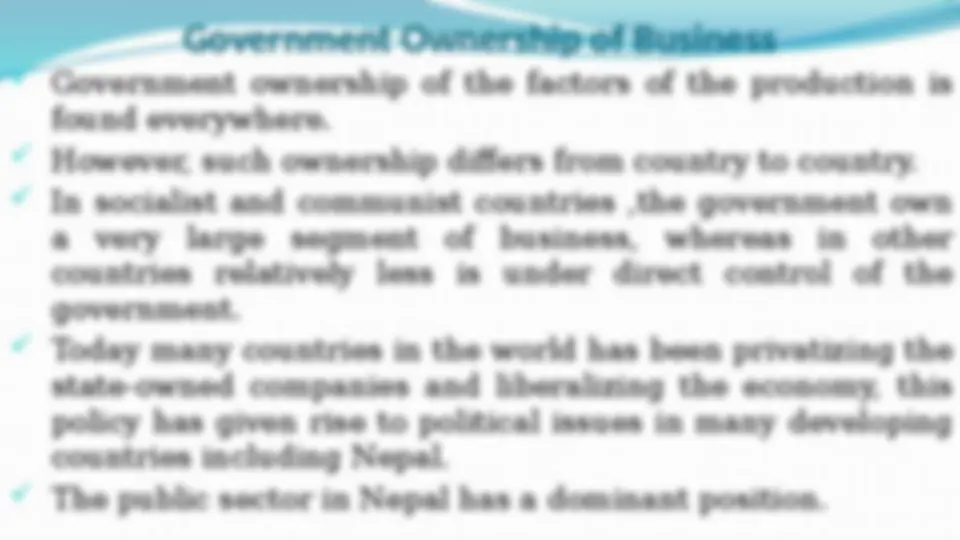
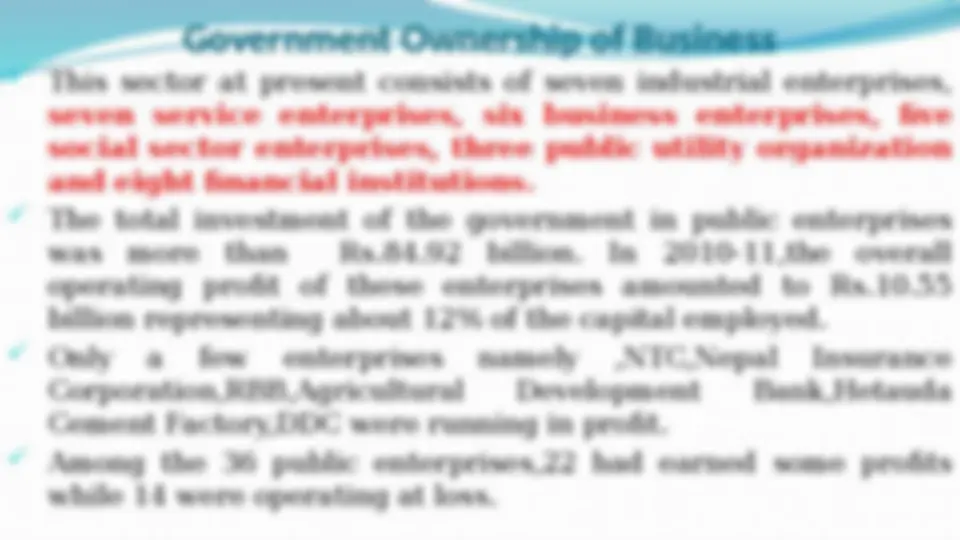
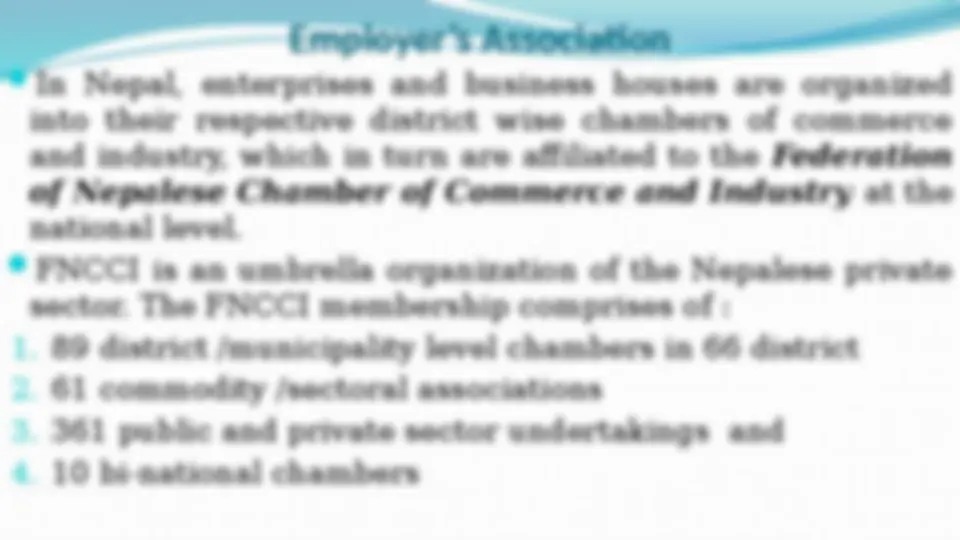
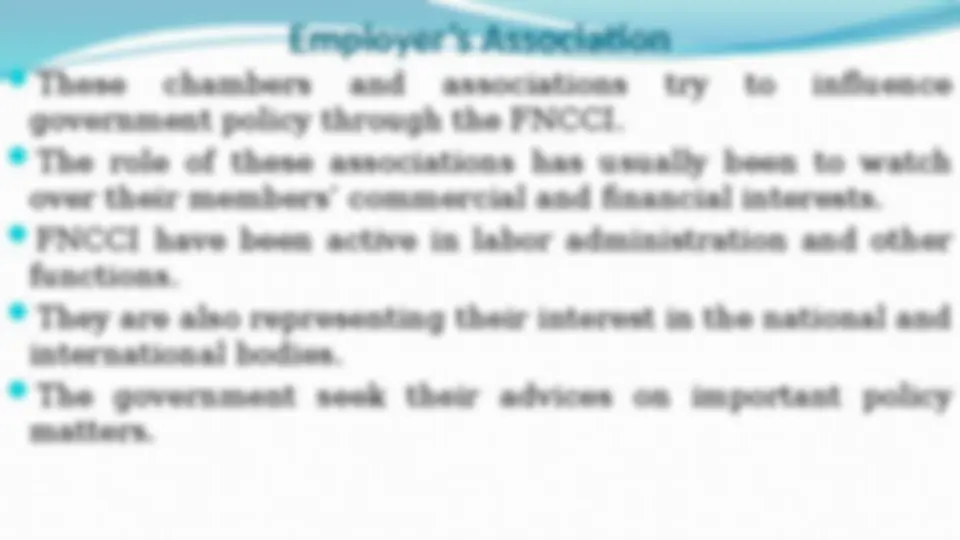
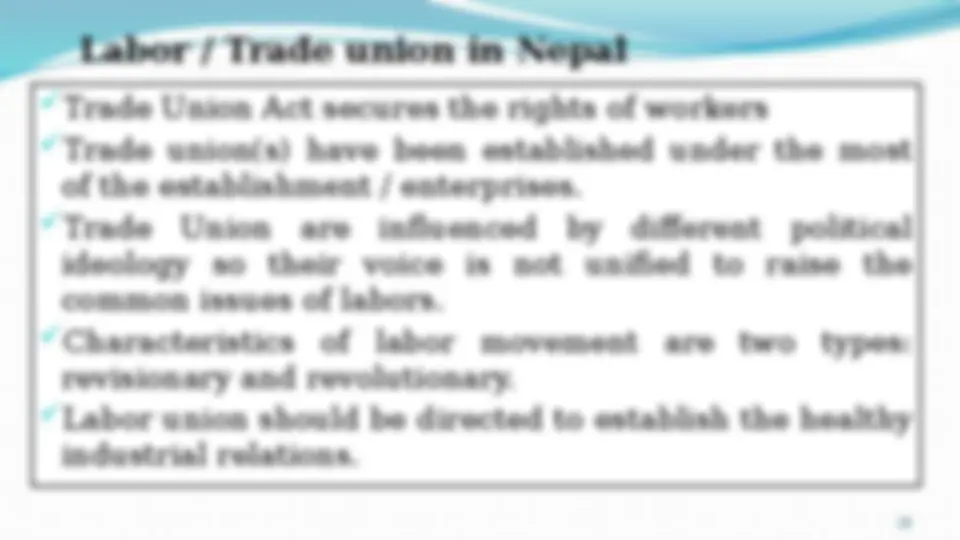
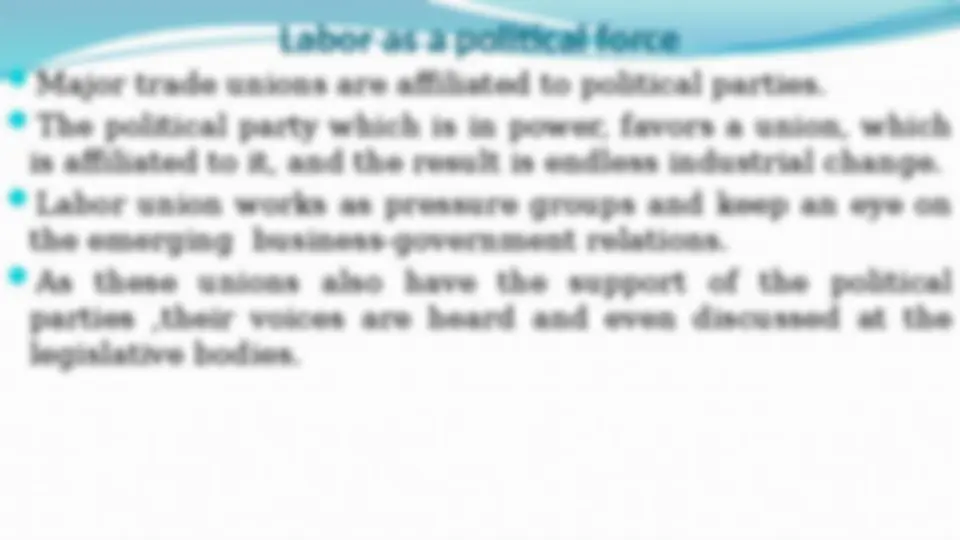
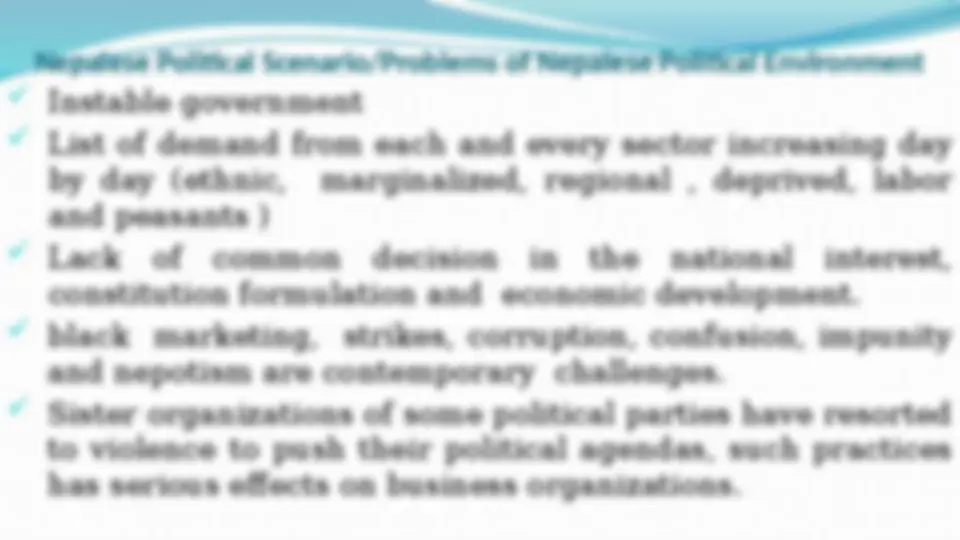
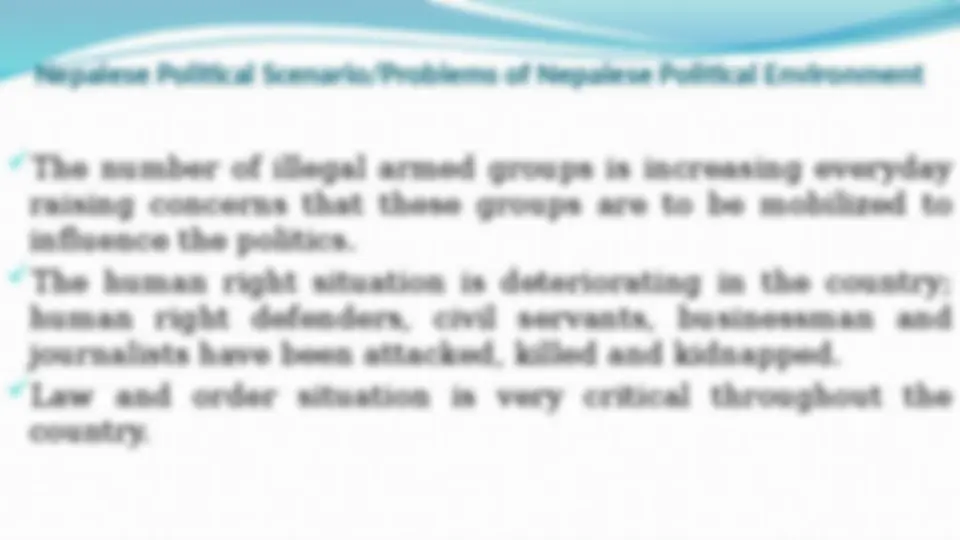
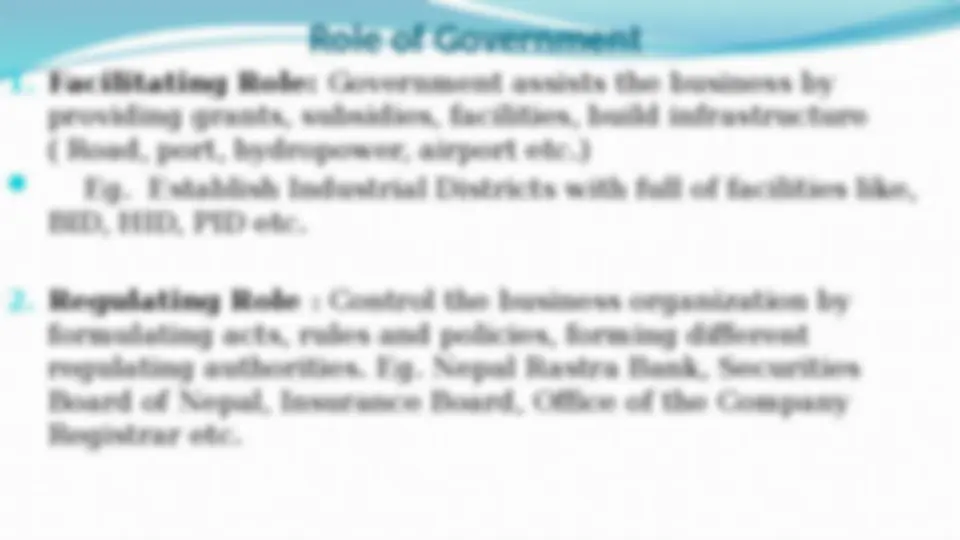
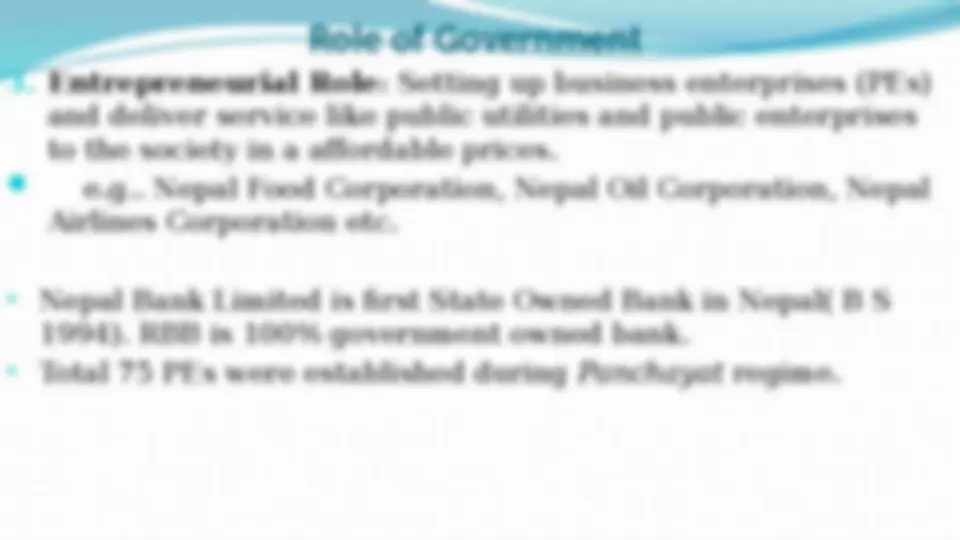
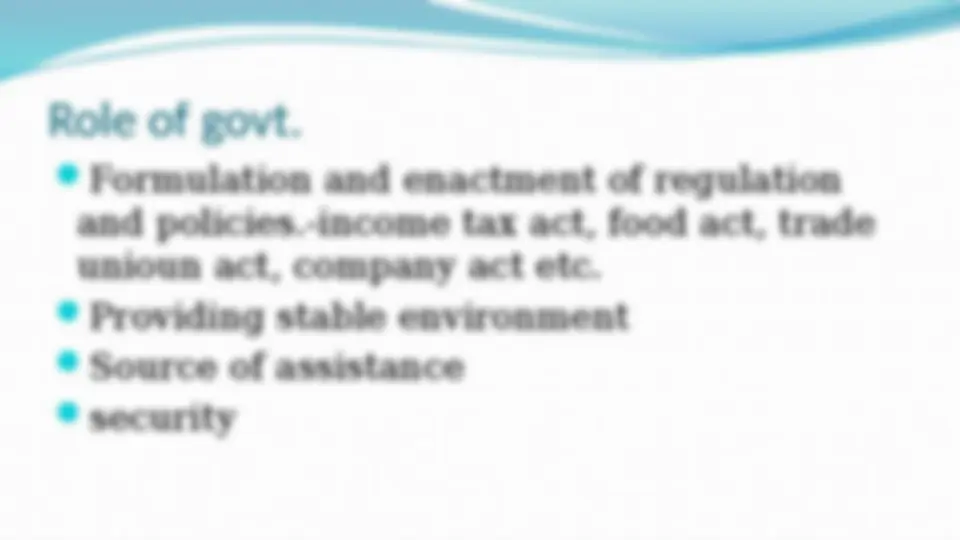
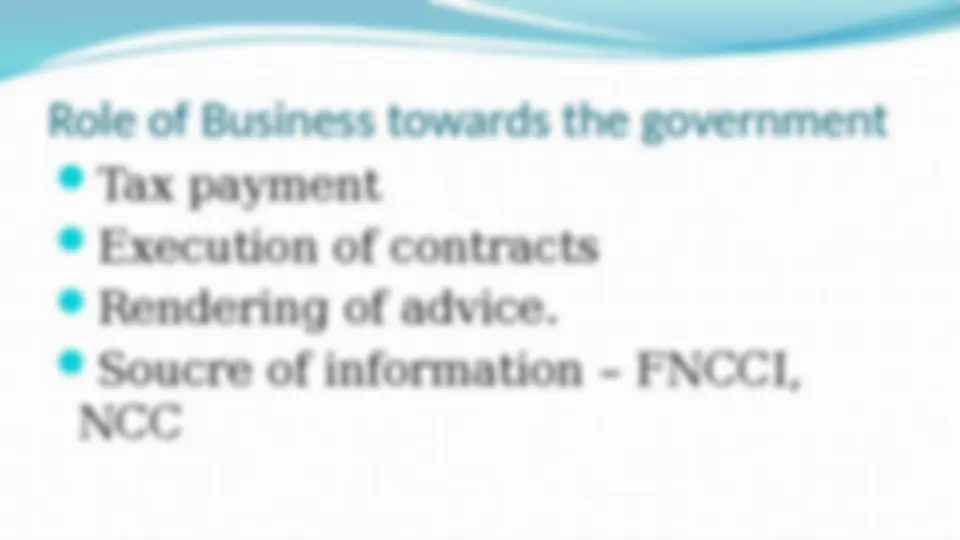
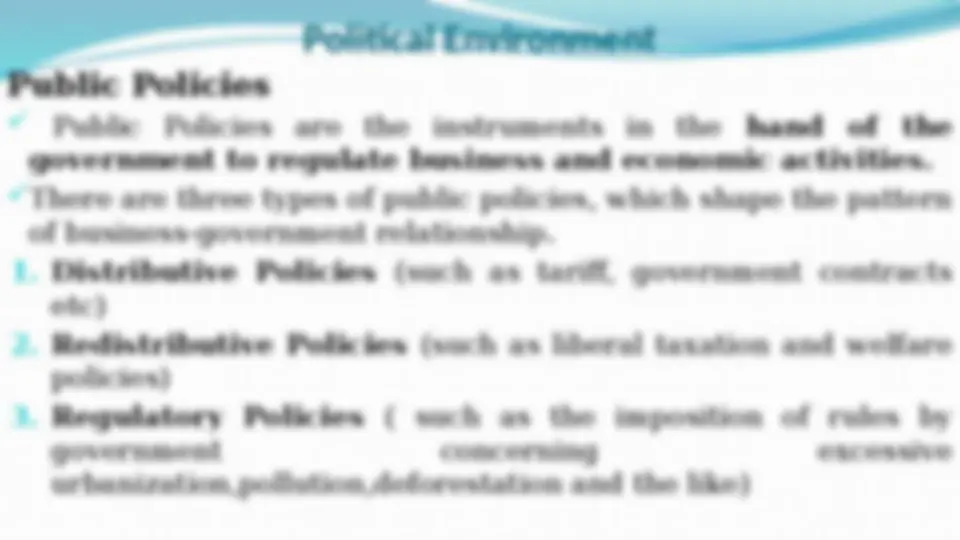

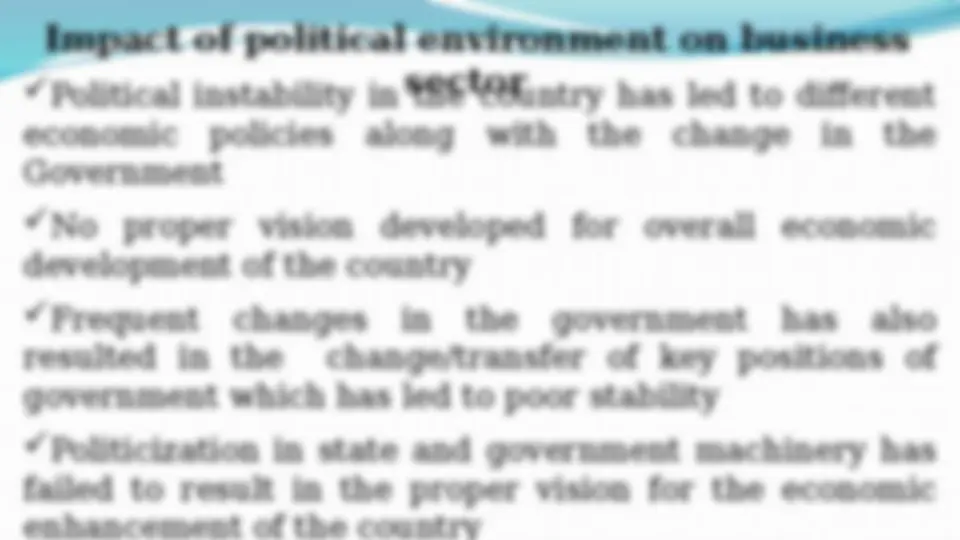

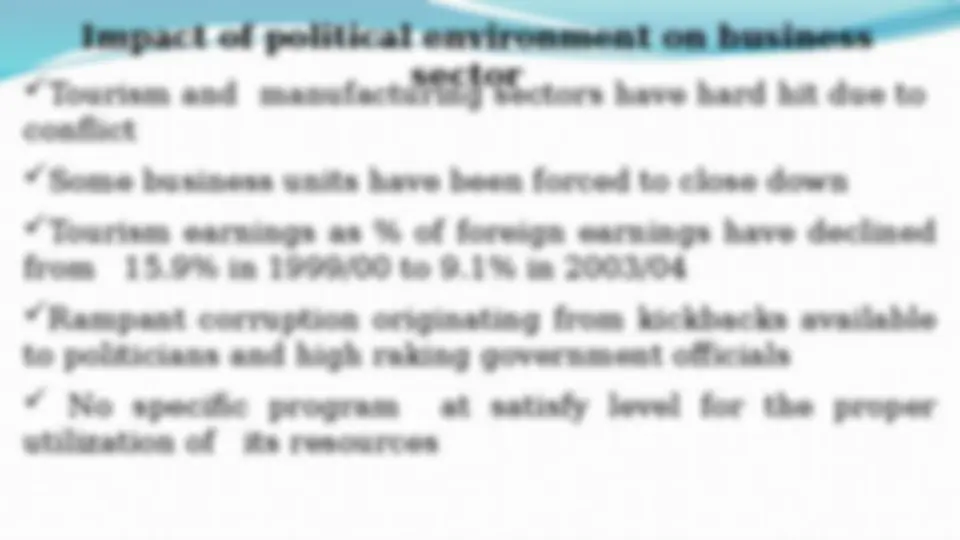
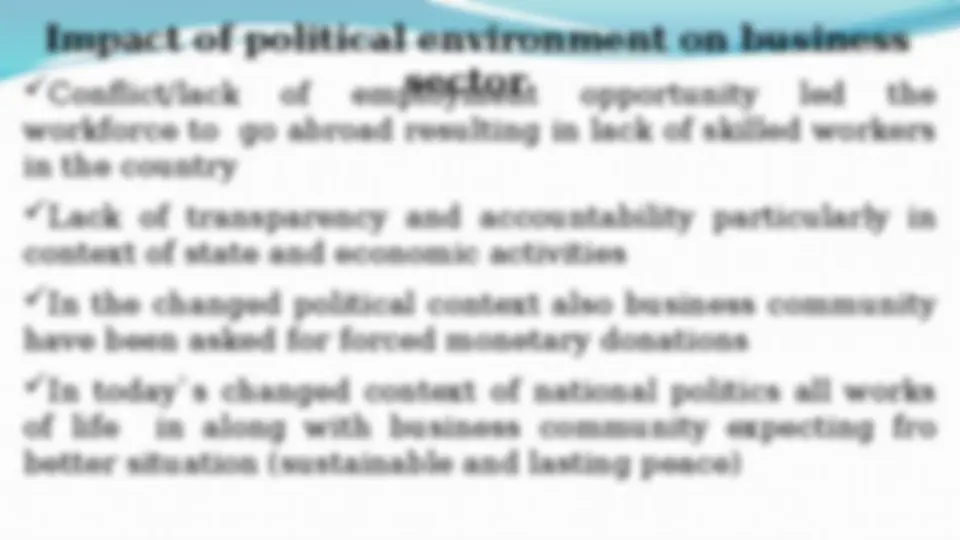
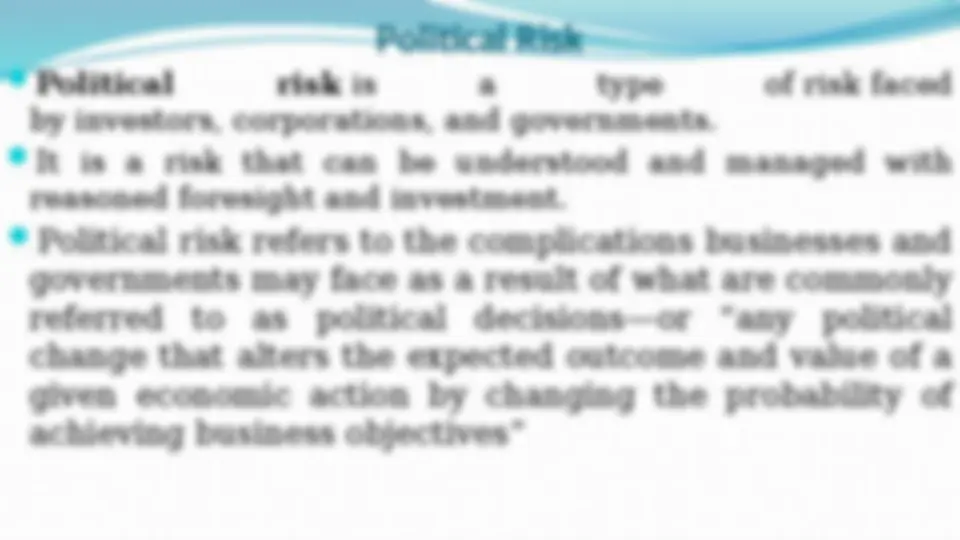
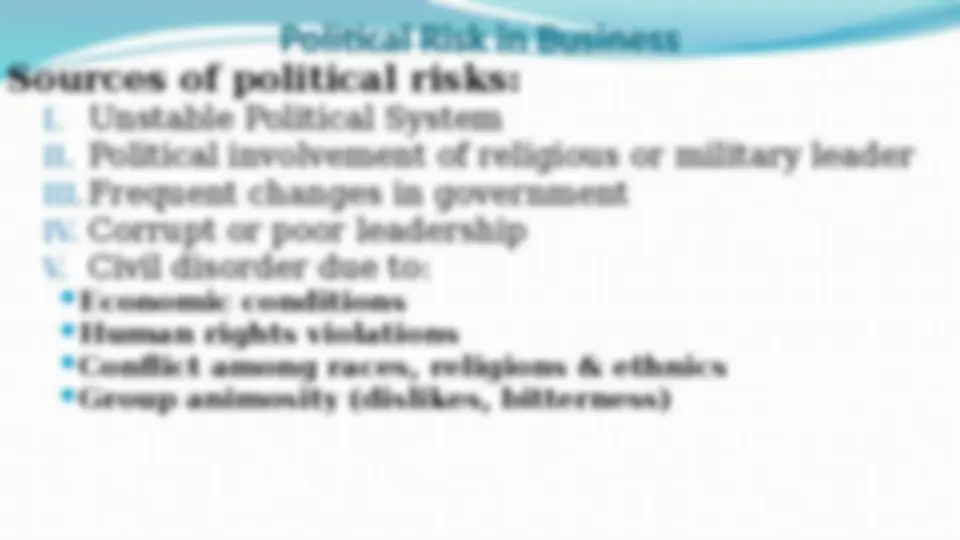
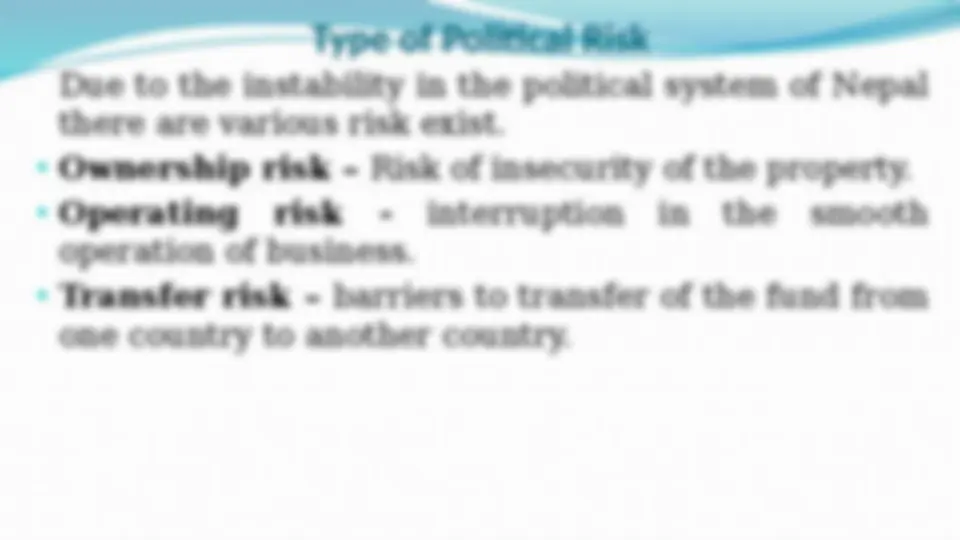
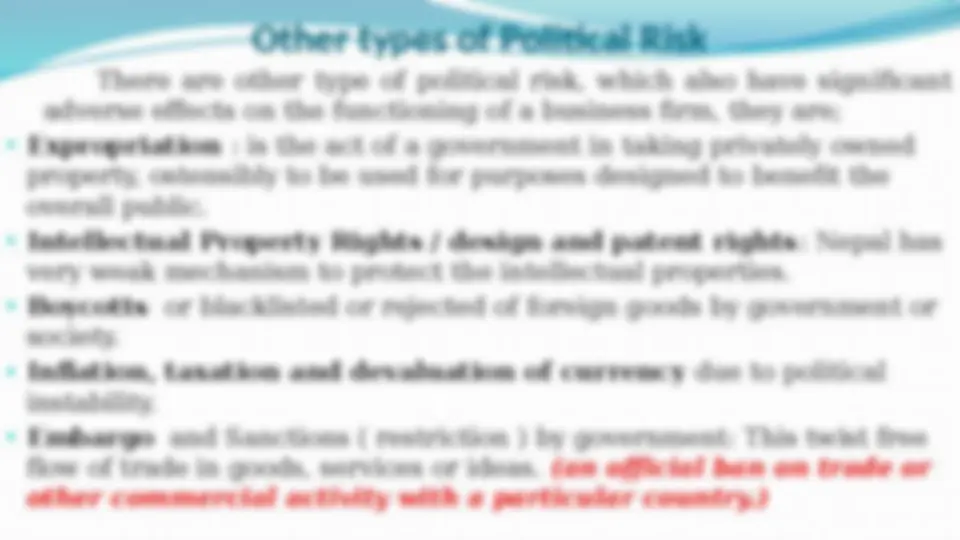
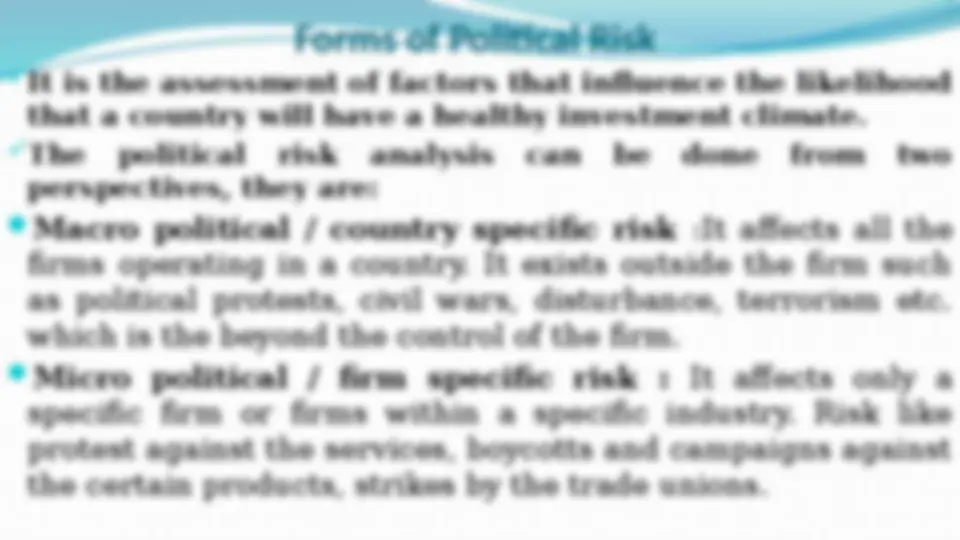
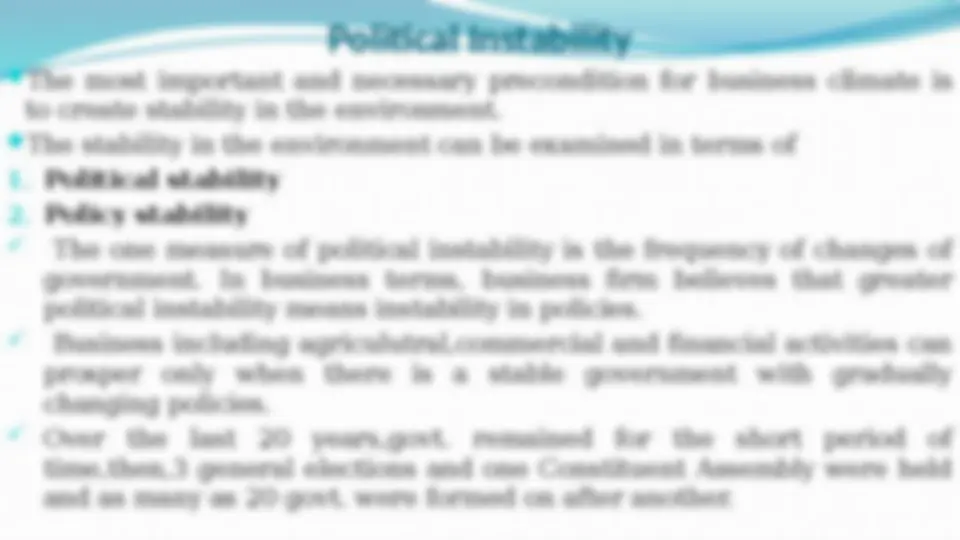
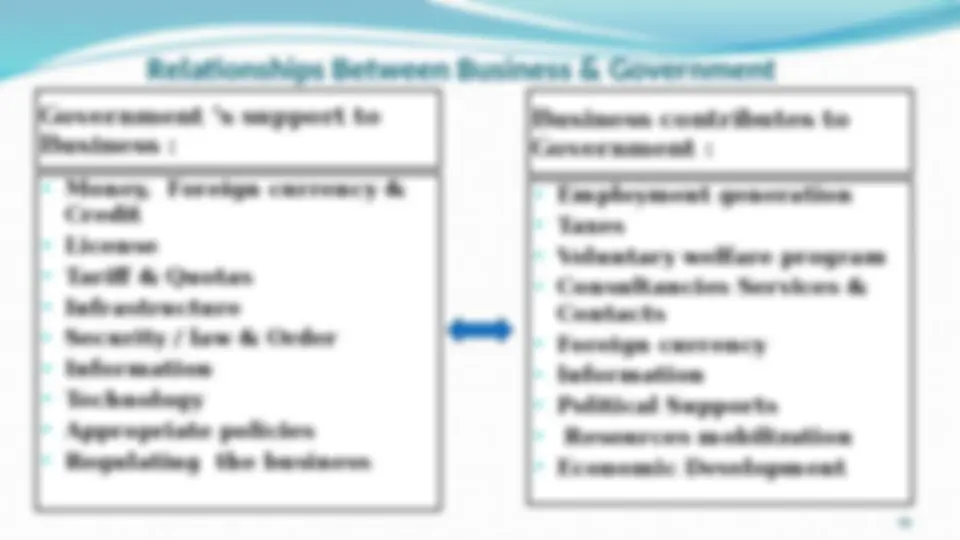
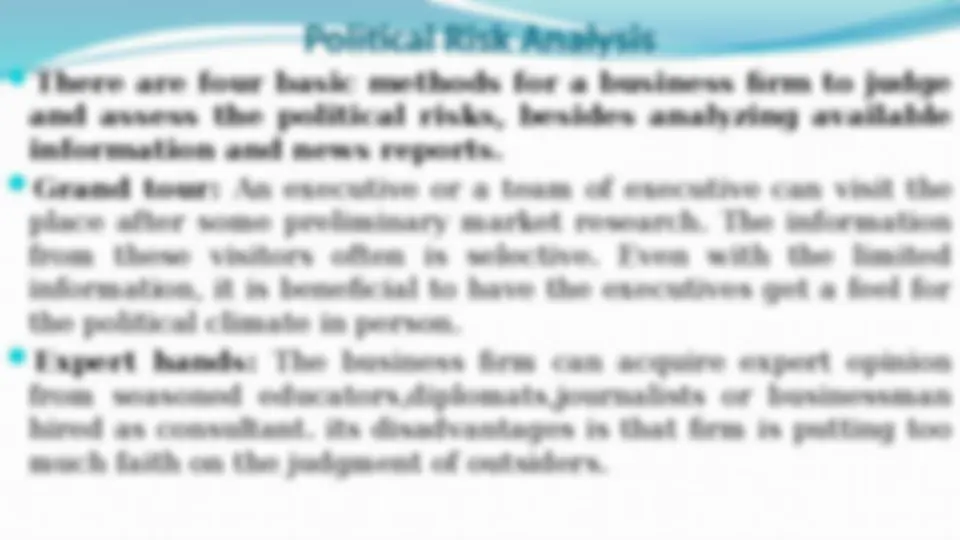

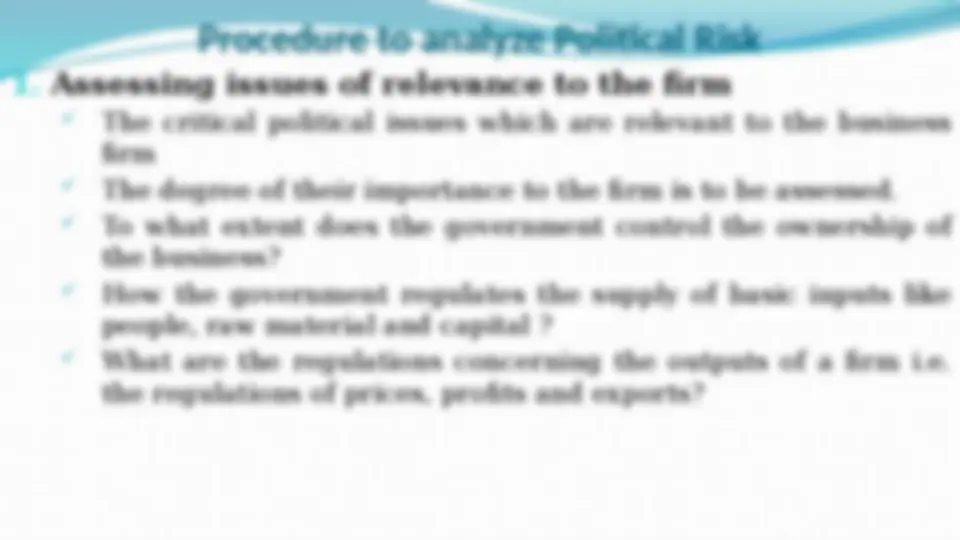
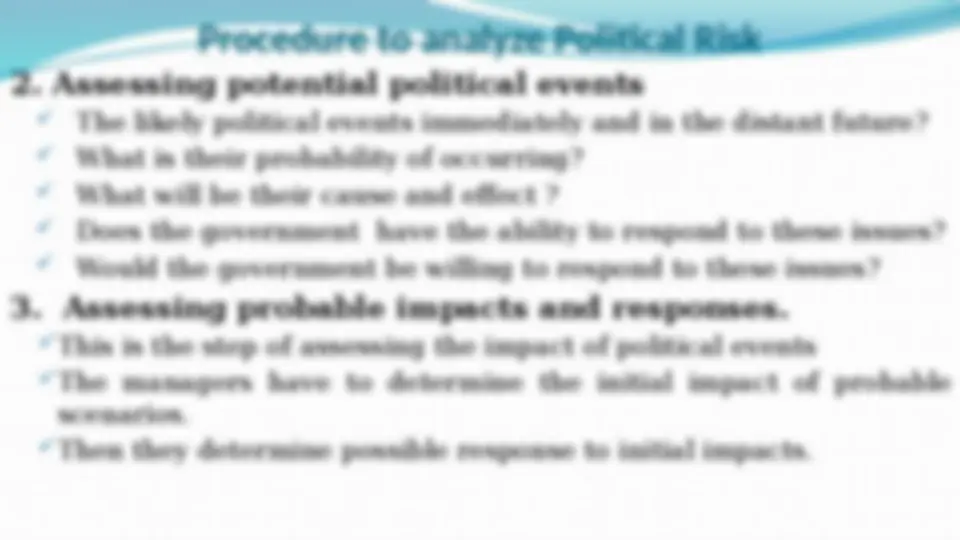

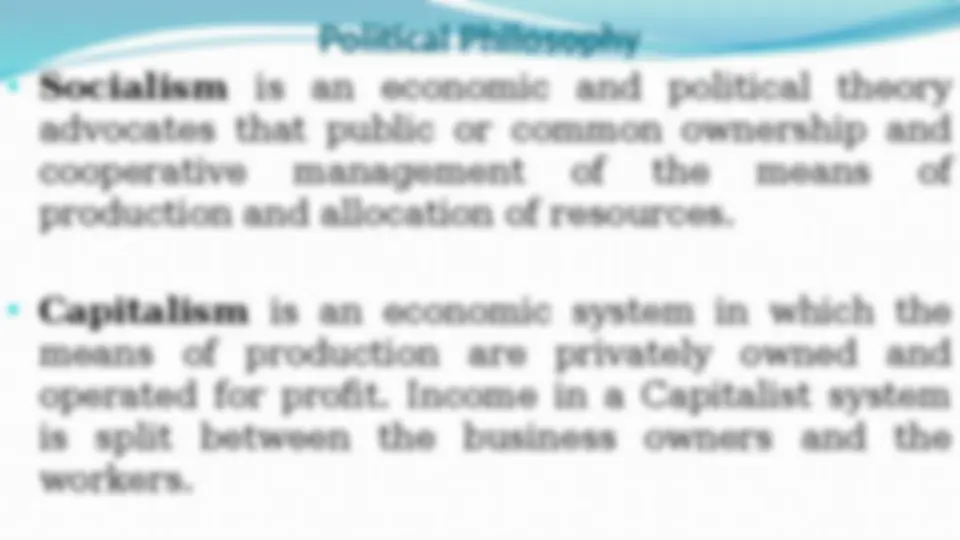
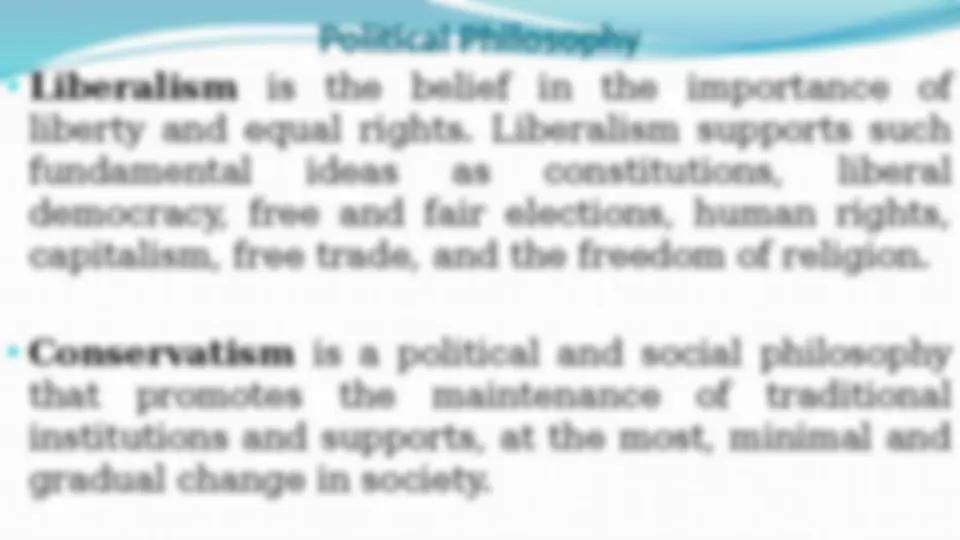
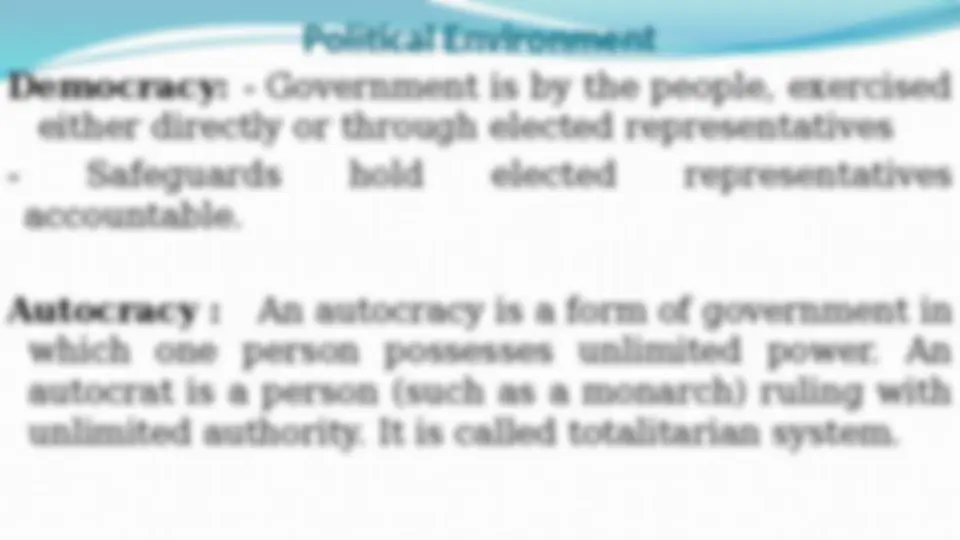
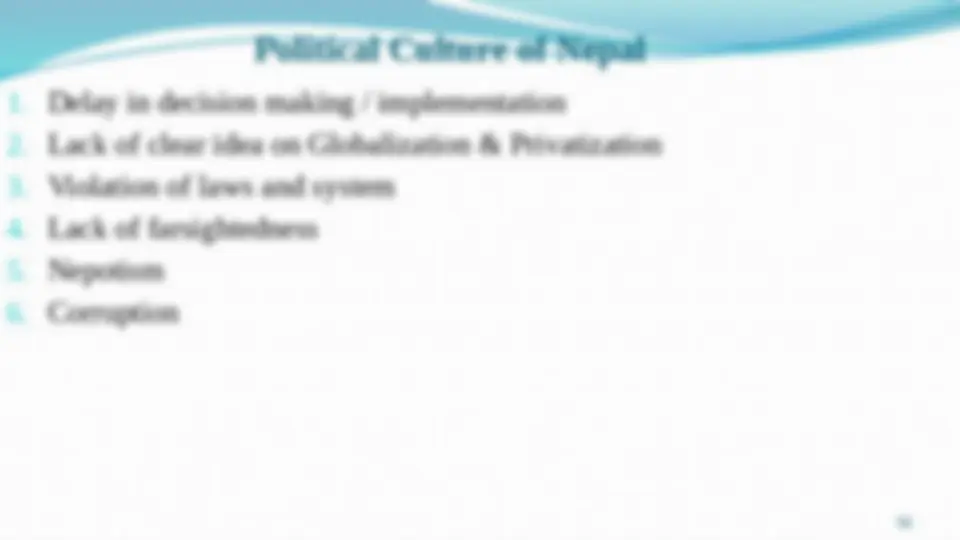
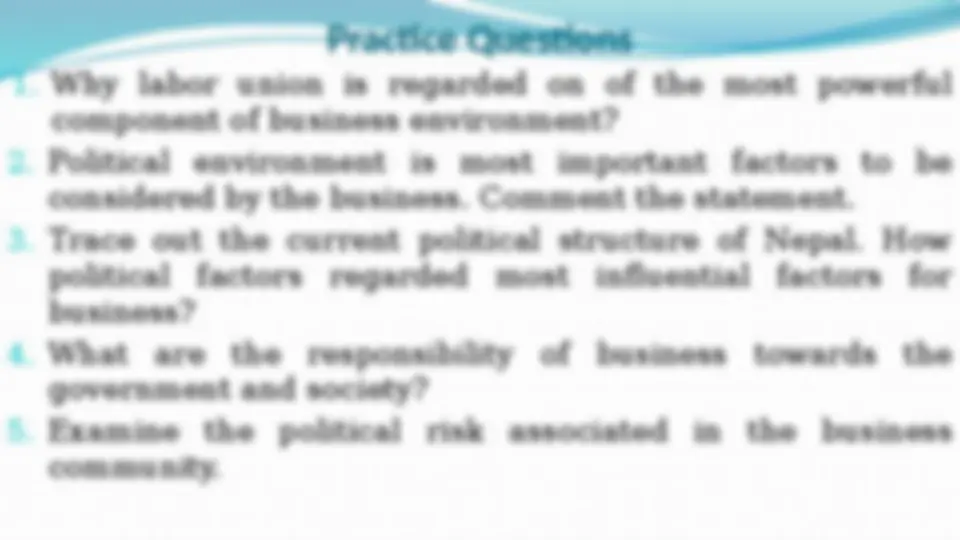


Study with the several resources on Docsity

Earn points by helping other students or get them with a premium plan


Prepare for your exams
Study with the several resources on Docsity

Earn points to download
Earn points by helping other students or get them with a premium plan
Community
Ask the community for help and clear up your study doubts
Discover the best universities in your country according to Docsity users
Free resources
Download our free guides on studying techniques, anxiety management strategies, and thesis advice from Docsity tutors
dfrryfuhvhjjvbfjghdsfuiofuoijknvmnfhgufghfuigyfhvfjvnvnfkjgufb
Typology: Essays (university)
1 / 59

This page cannot be seen from the preview
Don't miss anything!




















































Introduction to political environment Political parties and political structure in Nepal Relationship between political structure and the economy Government and its branches: legislative system executive system, and other constitutional bodies Basic Issues in business-government relations, Government ownership of Nepalese business Problems of Nepalese political environment Impact analysis of overall Nepalese business by citing above political environment particularly with reference to business sector
(^) Politics is universal social activity (^) Politics is concerned with gaining/using power to achieve goals (^) To study political system business firm should know to: (^) Analyze constitution major political parties (^) form or structure of government (^) the mechanism designed to guide a transition of power from one leader to another (^) key power blocks (^) All above factors are concerned with political stability a major factor for business environment
(^) Business firms have to bear, cope with ideological tensions, conflict (^) Political system is concerned with i) the direction and administration of state (^) ii) the government iii) the regulation of social relationship (^) State: is an association of people formed for specific common purpose with a clearly defined territory system of laws and an organized government (^) Government: involves in making and implementing laws, representing state, reunite political affairs management (^) Social relationships: in aggregated forms are integrated & regulated by state & its government for national harmony, peace & well being, development & human rights
(^) Nature of countrys political system reflects certain underlying social values and philosophies (^) Political parties have their own economic policies (^) **Democratic set up:** Political system changes somewhat along with change in government. Such political uncertainties create opportunities and threats (^) Business firms also do exercise considerable influence on political and government machinery to draw attention to fulfill their needs (^) Business firms also influenced by international politics.(Change in international politics affect domestic government policies which have impact on countrys environment)
Constitution (^) It is a legal document, a blueprint for the governance of the state. (^) It lays downs the fundamental principles, policies, institutional power and sets limits on the exercise of such power by a particular body politic (^) Nepal has gone through major political transitions and at current it is also in transition phase Nepal does not have a long constitutional history. However, several constitutional exercises were made in the country prior to the people movement of 2006. The historic people ‘s movement of 2006 expressed the prime goal of building a prosperous, modern Nepal.
Constitution ( Contd.) (^) The Interim Constitution of Nepal,2007 was enforced and the common minimum programs were agreed based on eight party consensus. (^) November 20,2007 was declared the date for the Constituent Assembly elections. However on October 5,2007 ,the seven party alliance decided to postponed the elections till further decision. (^) first constitution election 2064, chaitra 28 ,caste and division issues (^) Jesth 14,2070 constitution assembly was adjourned. (^) Mangsir 4,2070 Election was done.
Constitution ( Contd.) (^) Salient features of Interim Constitution are as follows; Promotion of conditions of welfare on the basis of principles of an open society by establishing just system in all aspects of national life Establishment and development of healthy social life on foundation of justice and morality and harmony among all castes, tribes Wider participation of the people in governance of the country, decentralization and promotion of general welfare for protection and promotion of human rights
Constituent Assembly (^) The interim Constituent adopted in January 2007,transferred the executive power of the King to the Prime Minister and established a 330 seat Interim Parliament, this was later replaced by an elected 601 seat Constituent Assembly. (^) After two postponements in 2007,Nepal’s first ever Constituent Assembly elections were finally held on April 10,2008. (^) A mixed electoral system was adopted with 240 seats for direct elections from the constituencies,335 for proportional representation on the basis of parties’ overall share of the votes, and 26 seats for distinguished individuals to be nominated by the cabinet. The constituent Assembly was given two years timeframe to draft a constitution that speaks to the needs of Nepal multi-ethnic population.
Legislature ( House of Representative) Most powerful institution of the state / nation Representation of the people / elected body Prepare acts even constitution as per the need of the society / country. Approve budget, control executives, (^) Facilitates the business through formation of various acts. (^) Direct the executives to prepare policies and provide supports. 16
Executives ( Council of Ministries) Centre of political authority which possess immense power to exercise. Prepare rules, regulations, policies and procedures to enhance the business environment. It composites Ministries, Department, Division, district branches of various ministries, District Development Committee, District Branches, Municipalities and VDCs. It shapes, guides, controls, promotes, fosters and destroys the business activities. 17
The Interim Constitution of Nepal,2007 imagine the Constituent Assembly as the Legislature-Parliament. The president of Nepal has the responsibility to act as the head of the state and guardian of the constitution. The term “government” refers to the center of political authority having the power to govern those it serves. In Nepal, the Council of Ministers headed by the Prime Minister represents the executive system. In Republican Parliamentary democracy, the real storehouse of power is the Cabinet. The Cabinet, functioning on the principle of collective responsibility, is the top policy making body in the government.
The local government structure comprises the VDC and municipalities. Each of the 3915 VDCs in the country comprises 9 wards, a VDC has approx 800 households and there are 58 municipalities in the country. At the district level, each of the 75 district has a district Development Committee. The Judicial System ensures that the executive system does indeed function as conceived, and also provides the mechanism to deal with deviations. The court of justice protects the citizens from unlawful acts passed by the legislature and arbitrary acts done by the executive.